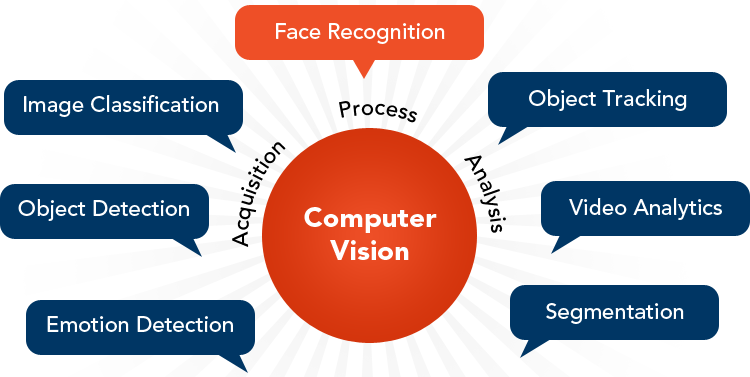
Seeing Beyond the Pixels: Exploring Computer Vision and Image Recognition
Demystifying Computer Vision
Computer Vision is a field of artificial intelligence that enables machines to interpret and understand visual information from the real world. By emulating the human visual system, Computer Vision algorithms analyze digital images or videos to extract meaningful insights, identify objects, and recognize patterns. Key components of Computer Vision include:
Image Processing: Image processing techniques such as filtering, segmentation, and feature extraction are used to preprocess raw visual data and enhance image quality for subsequent analysis.
Object Detection and Recognition: Computer Vision algorithms can detect and localize objects within images or videos, classify them into predefined categories, and assign labels or tags based on their visual characteristics.
Scene Understanding: Advanced Computer Vision models can interpret complex scenes, infer spatial relationships between objects, and understand contextual information to derive higher-level insights.
Deep Learning and Neural Networks: Deep learning techniques, particularly Convolutional Neural Networks (CNNs), have revolutionized Computer Vision by enabling end-to-end learning from raw visual data, leading to breakthroughs in image recognition accuracy and performance.
Unveiling Image Recognition
Image Recognition, a subset of Computer Vision, focuses on the automated identification and classification of objects, patterns, or features within digital images. By leveraging machine learning algorithms, Image Recognition systems can analyze visual data and classify images into predefined categories or labels. Key aspects of Image Recognition include:
Classification: Image Recognition models assign labels or categories to images based on their visual content, enabling tasks such as object identification, scene recognition, and image tagging.
Object Detection: Image Recognition systems can detect and localize specific objects within images or videos, drawing bounding boxes around them and identifying their position, size, and orientation.
Facial Recognition: Facial recognition technology enables the identification and verification of individuals based on their facial features, allowing for applications such as biometric authentication, surveillance, and personalized experiences.
Pattern Recognition: Image Recognition algorithms can identify recurring patterns, textures, or structures within images, enabling applications such as medical imaging analysis, industrial quality control, and satellite image processing.
Applications Across Industries
The applications of Computer Vision and Image Recognition span a wide range of industries and domains, including:
Healthcare: Computer Vision enables medical image analysis, disease diagnosis, and surgical assistance, improving patient outcomes and streamlining healthcare workflows.
Retail: Image Recognition powers visual search, product recommendation systems, and inventory management, enhancing customer experiences and driving sales.
Automotive: Computer Vision enables autonomous driving, driver assistance systems, and vehicle safety features, revolutionizing transportation and mobility.
Security and Surveillance: Image Recognition technologies enhance security and surveillance systems by detecting anomalies, identifying suspicious activities, and recognizing individuals in real-time.
Embracing the Future of Visual Intelligence
As we journey into an increasingly visual world, the role of Computer Vision and Image Recognition will continue to expand, driving innovation, efficiency, and new possibilities across industries. By empowering machines to interpret and understand visual information, we can unlock new insights, automate tasks, and create more intelligent and responsive systems. As we embrace the future of visual intelligence, let us leverage the power of Computer Vision and Image Recognition to shape a world where machines see, understand, and interact with the world around us in ways previously unimaginable.